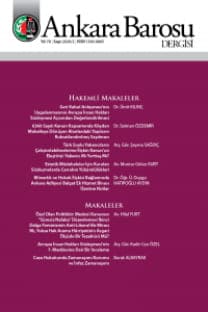The Free Movement of Judgments within the European Union
The main objective set out in the Treaty of Rome (1957) was to establish common markets and to create the European Economic Community through providing four freedoms: free movement of goods, services, capital and person.1 For the free movement of goods, services and capital, it is necessary to provide legal certainty and legal security in the EU. Thus, the free movement of judgments between Member States should be regulated. In fact, the European States and later on the European Union Institutions have been working to harmonize the European Union conflicts of laws.2 The EC Commission has promulgated a Regulation on Jurisdiction and the Recognition and Enforcement of Judgments in Civil and Commercial Matters known as “Brussels I” which replaces the Brussels Convention. The main goal of the EC Council Regulation no 44/2001 (Brussels I Regulation) is to facilitate the free movement of judgments between Member States. This study will examine as to what extent the Brussels I Regulation achieved the “free movement of judgments” between the Member States of the EU. In order to find out to what extent the Regulation achieved its aim mainly free movement of judgment, this study first of an analyzes the main principles of Brussels I Regulation. Then, it examines the grounds for refusal of recognition and enforcement, and the procedure of recognition and enforcement.
- ISSN: 1300-9885
- Yayın Aralığı: Yılda 4 Sayı
- Başlangıç: 1942
- Yayıncı: Ankara Barosu Başkanlığı
Sayıdaki Diğer Makaleler
Development of Competition Policy in The Turkish Banking Sector: 1994-2005
Dr. Necip Kağan Kocaoğlu, Esq.
Adli Sicil ve Arşiv Kayıtlarının 5352 Sayılı Yasaya Göre Silinmesi
Av. H.Erdal Demir, Av. Ertuğrul Bayram, Stj. Av. Burak Kocaoğlu
Uluslararası Ceza Mahkemesi ve Türkiye’nin Durumu
Anonim Şirketlerin Kısmi Bölünmelerinde Değerleme Sorunu ve Azınlık Hakları
Avukatlık Kimliği ve Avukatın Yargı Sistemi İçindeki Yeri
“Intuitu Personae” veya İmtiyaz Sözleşmelerinde İdarenin İmtiyazcıyı Seçme Hakkı Üzerine...
